
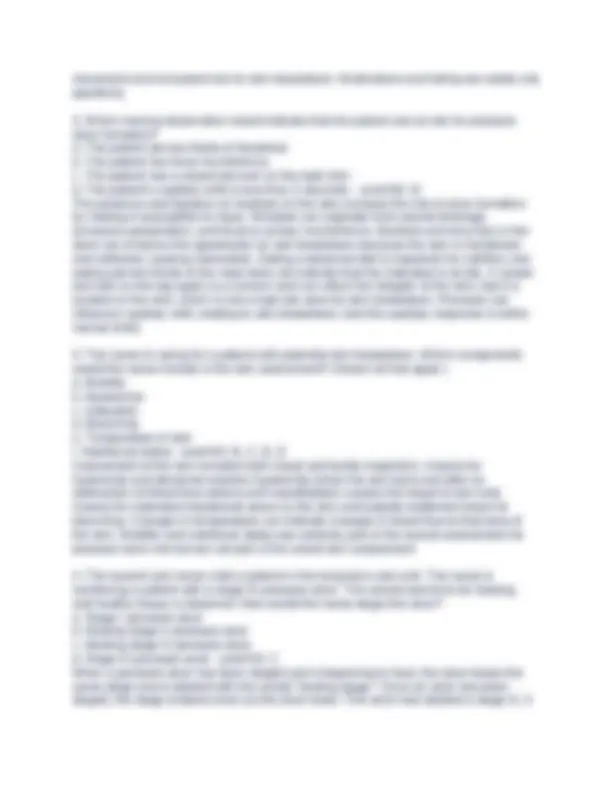
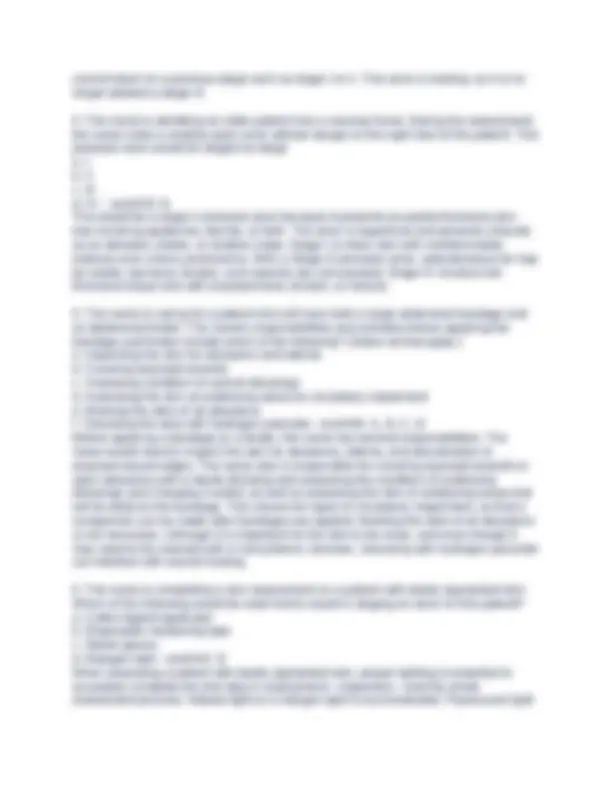
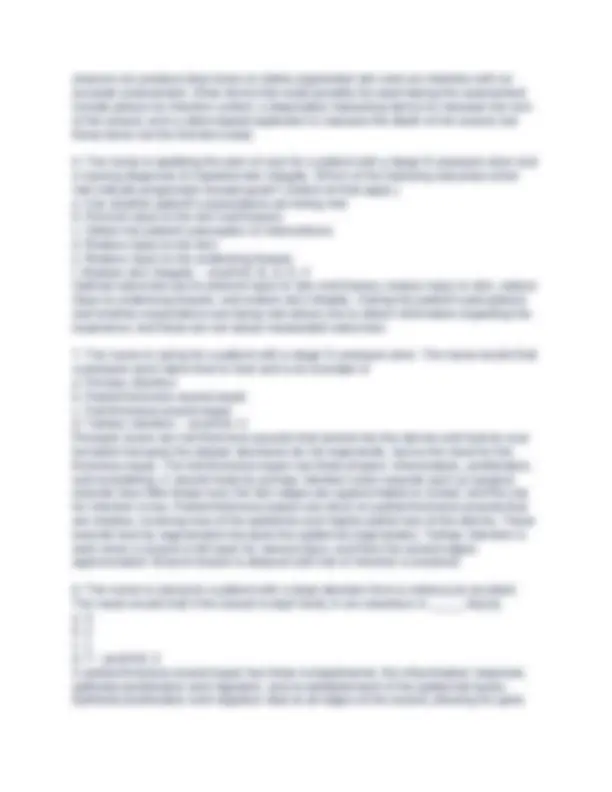
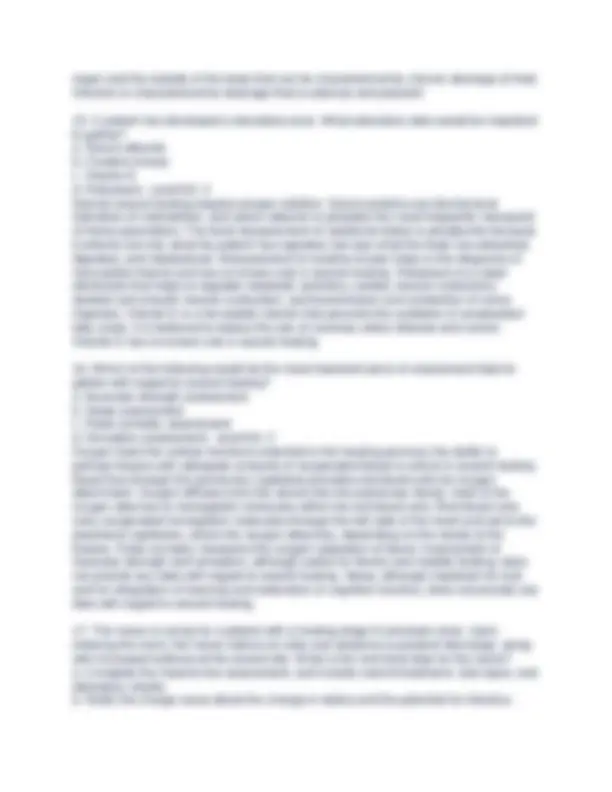
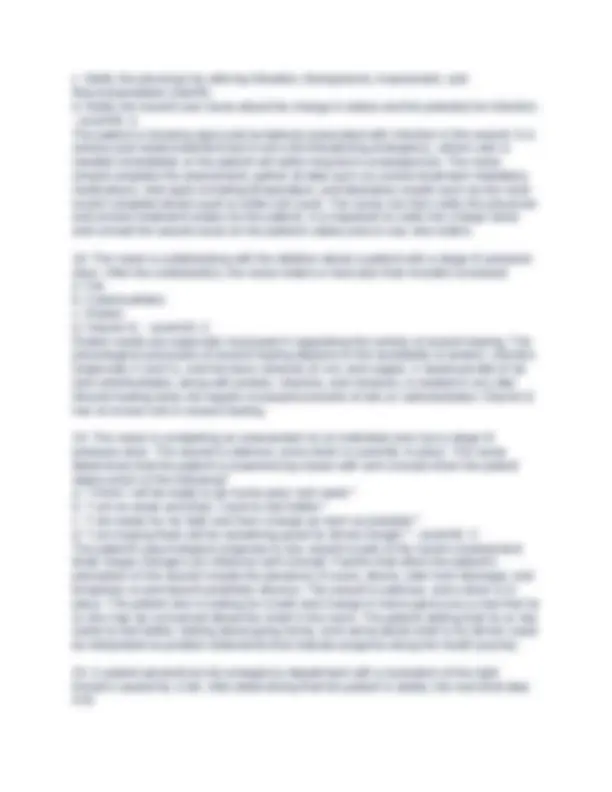
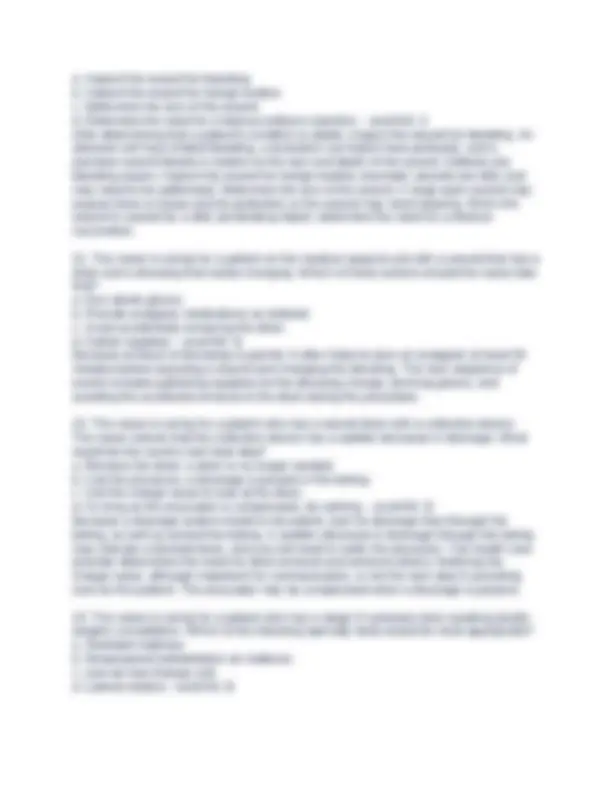
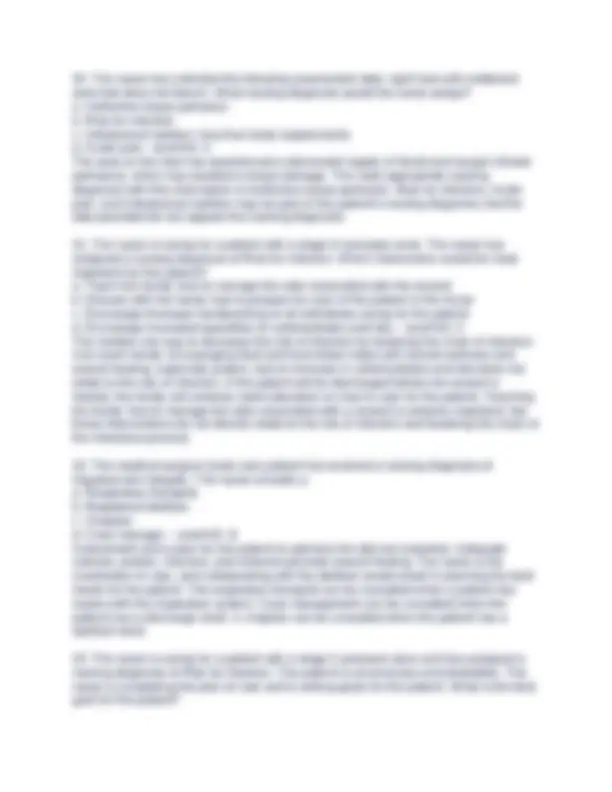
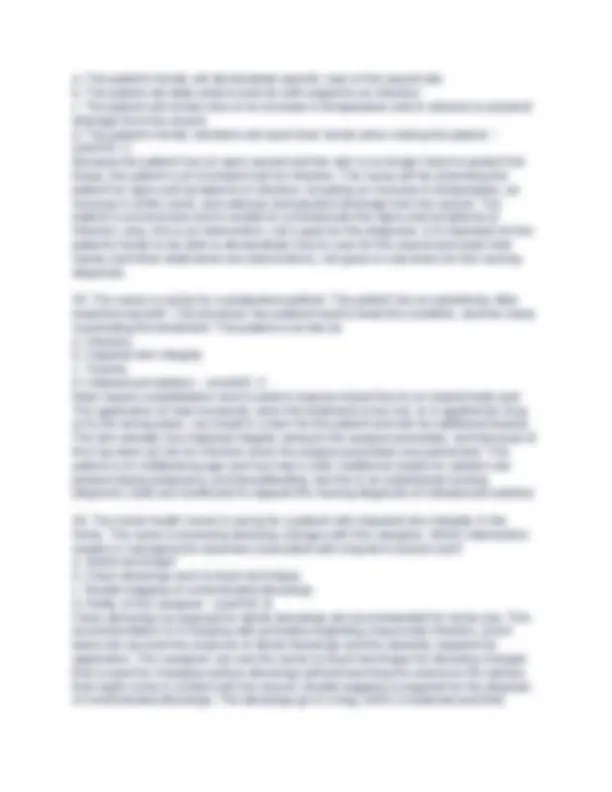
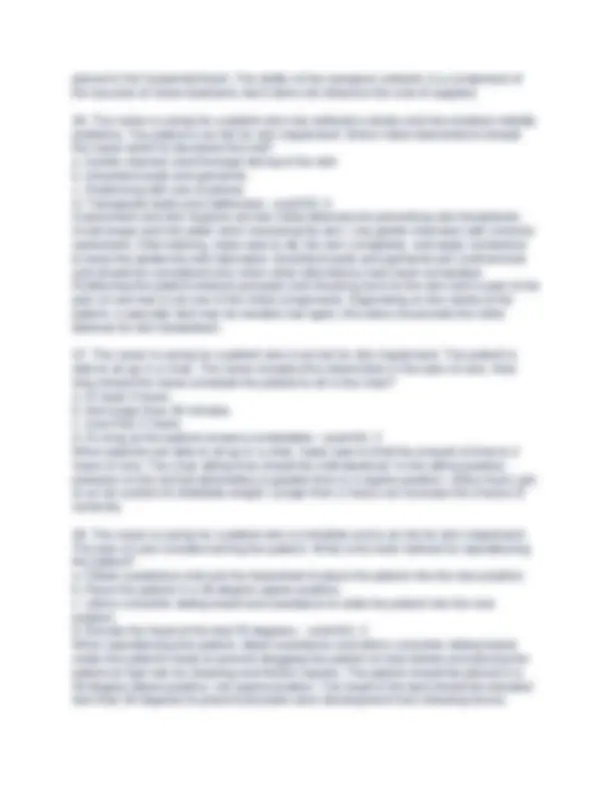


Study with the several resources on Docsity

Earn points by helping other students or get them with a premium plan


Prepare for your exams
Study with the several resources on Docsity

Earn points to download
Earn points by helping other students or get them with a premium plan
Community
Ask the community for help and clear up your study doubts
Discover the best universities in your country according to Docsity users
Free resources
Download our free guides on studying techniques, anxiety management strategies, and thesis advice from Docsity tutors
Practice questions related to skin integrity and wound care. The questions cover topics such as risk factors for pressure ulcer development, factors influencing wound healing, and skin assessment questions. The document also includes information on the multidisciplinary approach to wound care and the phases of wound repair. The questions are designed to help nursing students prepare for exams or assignments related to skin integrity and wound care.
Typology: Exams
1 / 17

This page cannot be seen from the preview
Don't miss anything!










cannot return to a previous stage such as stage I or II. This ulcer is healing, so it is no longer labeled a stage III.
sources can produce blue tones on darkly pigmented skin and can interfere with an accurate assessment. Other items that could possibly be used during the assessment include gloves for infection control, a disposable measuring device to measure the size of the wound, and a cotton-tipped applicator to measure the depth of the wound, but these items not the first item used.
heals by primary intention. The skin edges are approximated or closed, and the risk for infection is low. Partial- thickness repair are done on partial-thickness wounds that are shallow, involving loss of the epidermis and maybe partial loss of the dermis. These wounds heal by regeneration because the epidermis regenerates. Tertiary intention is seen when a wound is left open for several days, and then the wound edges are approximated. Wound closure is delayed until the risk of infection is resolved.
organ and the outside of the body that can be characterized by chronic drainage of fluid. Infection is characterized by drainage that is odorous and purulent.
a. Inspect the wound for bleeding. b. Inspect the wound for foreign bodies. c. Determine the size of the wound. d. Determine the need for a tetanus antitoxin injection. - ansANS: A After determining that a patient's condition is stable, inspect the wound for bleeding. An abrasion will have limited bleeding, a laceration can bleed more profusely, and a puncture wound bleeds in relation to the size and depth of the wound. Address any bleeding issues. Inspect the wound for foreign bodies; traumatic wounds are dirty and may need to be addressed. Determine the size of the wound. A large open wound may expose bone or tissue and be protected, or the wound may need suturing. When the wound is caused by a dirty penetrating object, determine the need for a tetanus vaccination.
A low-air-loss therapy unit is utilized for stage IV pressure ulcers and when prevention or treatment of skin breakdown is needed. If the patient has a stage III or stage IV ulcer or a postoperative myocutaneous flap, the low-air-loss therapy unit would be an appropriate selection. A static air mattress or nonpowered redistribution is utilized for the patient at high risk for skin breakdown. A standard mattress is utilized for an individual who does not have actual or potential altered or impair skin integrity. Lateral rotation is used for treatment and prevention of pulmonary complications associated with mobility.
a. The patient's family will demonstrate specific care of the wound site. b. The patient will state what to look for with regard to an infection. c. The patient will remain free of an increase in temperature and of odorous or purulent drainage from the wound. d. The patient's family members will wash their hands when visiting the patient. - ansANS: C Because the patient has an open wound and the skin is no longer intact to protect the tissue, the patient is at increased risk for infection. The nurse will be assessing the patient for signs and symptoms of infection, including an increase in temperature, an increase in white count, and odorous and purulent drainage from the wound. The patient is unconscious and is unable to communicate the signs and symptoms of infection; also, this is an intervention, not a goal for this diagnosis. It is important for the patient's family to be able to demonstrate how to care for the wound and wash their hands, but these statements are interventions, not goals or outcomes for this nursing diagnosis.
best explanation for the nurse to use when teaching the patient the reason for the binder? a. The binder creates pressure over the abdomen. b. The binder supports the abdomen. c. The binder reduces edema at the surgical site. d. The binder secures the dressing in place. - ansANS: B The patient has a large abdominal incision. This incision will need support, and an abdominal binder will support this wound, especially during movement, as well as during deep breathing and coughing. A binder can be used to create pressure over a body part, for example, over an artery after it has been punctured. A binder can be used to prevent edema, for example, in an extremity but is not used to reduce edema at a surgical site. A binder can be used to secure dressings such as elastic webbing applied around a leg after vein stripping.